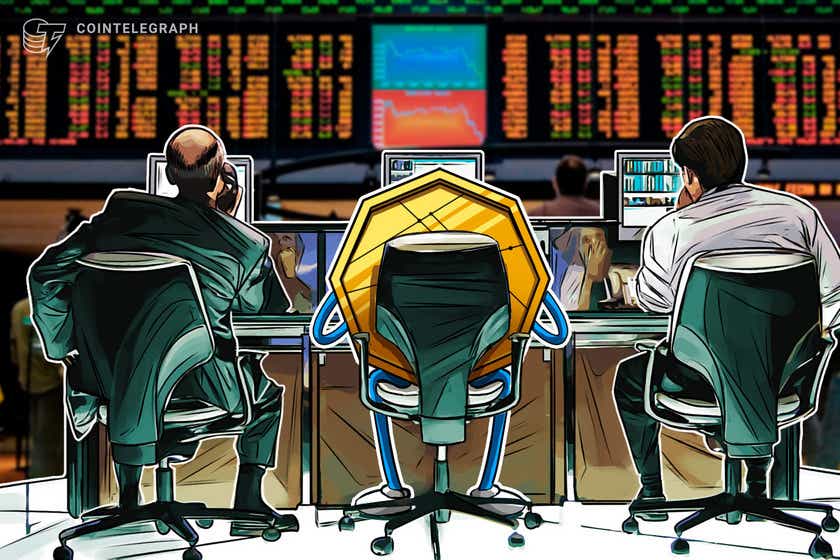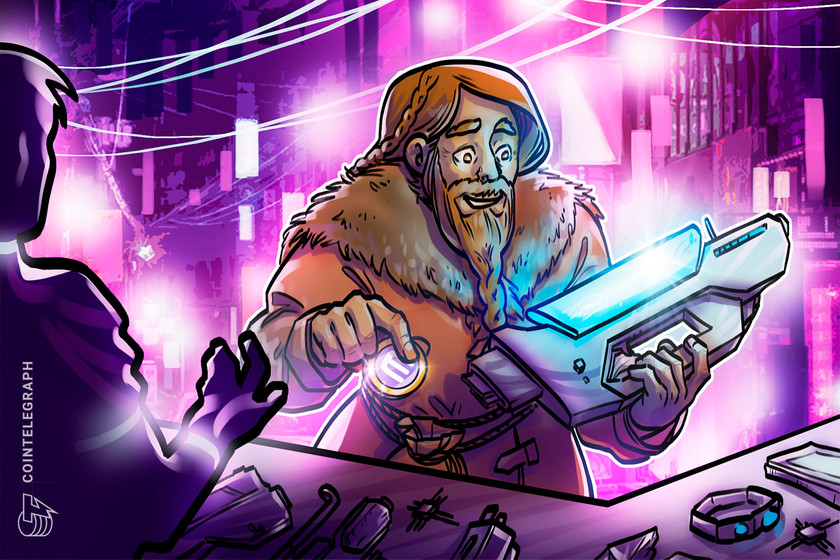Enjin co-founder: Use NFTs to track users in the metaverse


Instead of using moderators to shadowban users à la Twitter, the metaverse could offer a mechanism operable across blockchains incentivizing us to police fellow users ourselves.
For all the hype around the metaverse, it is easy to forget it is still in its infancy. While the term has only recently entered the broad public consciousness, its impact on how we interact with technology is already expected to be deeply consequential. McKinsey & Company estimates that annual global spending within the metaverse could reach $5 trillion by 2030 across domains as broad as gaming, social, fitness, commerce and remote learning.
The question of how to define and build technology with such broad capabilities is in flux. While a number of games — such as Roblox, Fortnite and Minecraft — have been hailed as early examples of successful metaverse platforms, a more holistic approach would see unrestricted interaction for players across these games. Interoperability between metaverse platforms is one key component that should be considered.
A new way of socializing
While only recently entering the public lexicon, the metaverse is not a new concept. The term was originally used to describe a fictional break from reality in Neil Stevenson’s Snow Crash. The popularity of digital entertainment surged massively during the pandemic. From games like Among Us to services like Netflix Party and Zoom, the opportunity to socialize virtually was highly appealing to many during a time of deep isolation.
Related: AI will help realize the true vision the metaverse hopes to achieve
These changes have fundamentally reshaped our ideas of how we socialize and work together, with enduring habits formed in connecting and collaborating virtually — an important factor accelerating engagement with the metaverse. Virtual experiences such as Travis Scott’s Fortnite concert have made positive steps forward in developing in-game socially immersive experiences. However, a multi-platform hypersocial virtual experience has yet to reach the market.
Moderation versus censorship
Freedom, community and collaboration are all defining characteristics of the metaverse. Achieving this requires infrastructure that can support the transfer of sensitive metadata across different blockchain protocols, metaverse platforms and gaming ecosystems in a blend of social media, crypto wallets and decentralized applications. So, before an interoperable metaverse introduces new business models and cross-platform capabilities, the issue of multichain identity and moderation must be addressed.
Decentralization brings with it the opportunity to experiment with community-led tactics, incentivizing certain behaviors and allowing the collective to dictate its own preferences. PubDAO, a publishing collective launched in conjunction with Decrypt, provides a good example of how these structures can function. Significantly, it makes a clear distinction between moderation and censorship. Pubbers are like-minded individuals, writers in this case, who get screened, onboarded and integrated into the culture of the community.
Scaling this model up to billions of people creates problems, as individual screening is unfeasible. Legacy social media is plagued with this issue, deploying shadow banning and other censorship tools to deal with the issue. A common solution proposed by Web3 advocates involves algorithmic detection and incentivized moderation to counteract abuse, and yet this fails to account for the nature of a multichain metaverse.
Even when done transparently and equitably, far too many abuses would slip through the net. Using the same machinations of the infamous Tornado Cash mixer, the laundering tool of choice for 52% of nonfungible token (NFT) scam proceeds prior to being sanctioned, one would be able to hide the origin of abusive messages in the name of free speech. Even if the perpetrator got doxed on one chain, they could hop to the next. This is not the type of metaverse anyone wants to inhabit.
NFTs make users trackable across chains
The potential solution lies in moving moderation tools upstream. Twitter has trialed such a process with success. By providing warning prompts prior to publishing tweets, 9% of users were encouraged to cancel their posts. Overall, the study concluded that there was a 6% reduction in offensive tweets as a result of this mechanism.


Implementing a metadata standard and infusing it with decentralized identifiers (DIDs) could provide an avenue for ethical moderation, one that does not impose on privacy but ensures accountability. Such a multichain technical standard would ensure that tokens minted on any chain can be traced back to their origin within the metaverse. NFTs could be infused with verifiable credentials, enabling platforms to afford privacy to their users and define the terms in which these rights would be forfeited.
Related: Get ready for the feds to start indicting NFT traders
More importantly, at a time where cybersecurity is an increasingly greater concern, a metadata standard would afford individual users more protection. Data breaches in gaming are notoriously common, with more than half of frequent gamers targeted by hacks, according to a 2020 report from Akamai. The wealth of victims and the prevalence of in-game microtransactions make a lucrative target for cybercriminals. On top of that, users tend to use the same password across accounts, making credential stuffing a serious issue with the potential to percolate across industries.
While certainly not a panacea, an interoperable standard would go a long way to consolidating individual security needs. Web3 is set up to accommodate an identity system that removes the need for sensitive data to be stored on centralized servers, making it harder for hackers to access. In the event that personal assets are compromised, a metadata standard imbued with DIDs would enable traceability across the multichain metaverse.
Data standards will dictate the evolution of the web, so it is important that we get them right. Interoperability is easier to set up from the outset than retrofitting it in. By learning the lessons offered by the development of the internet, we can together build a revolutionary metadata standard that fosters a positive, shared techno-social experience on Web3.
This article is for general information purposes and is not intended to be and should not be taken as legal or investment advice. The views, thoughts, and opinions expressed here are the author’s alone and do not necessarily reflect or represent the views and opinions of Cointelegraph.






